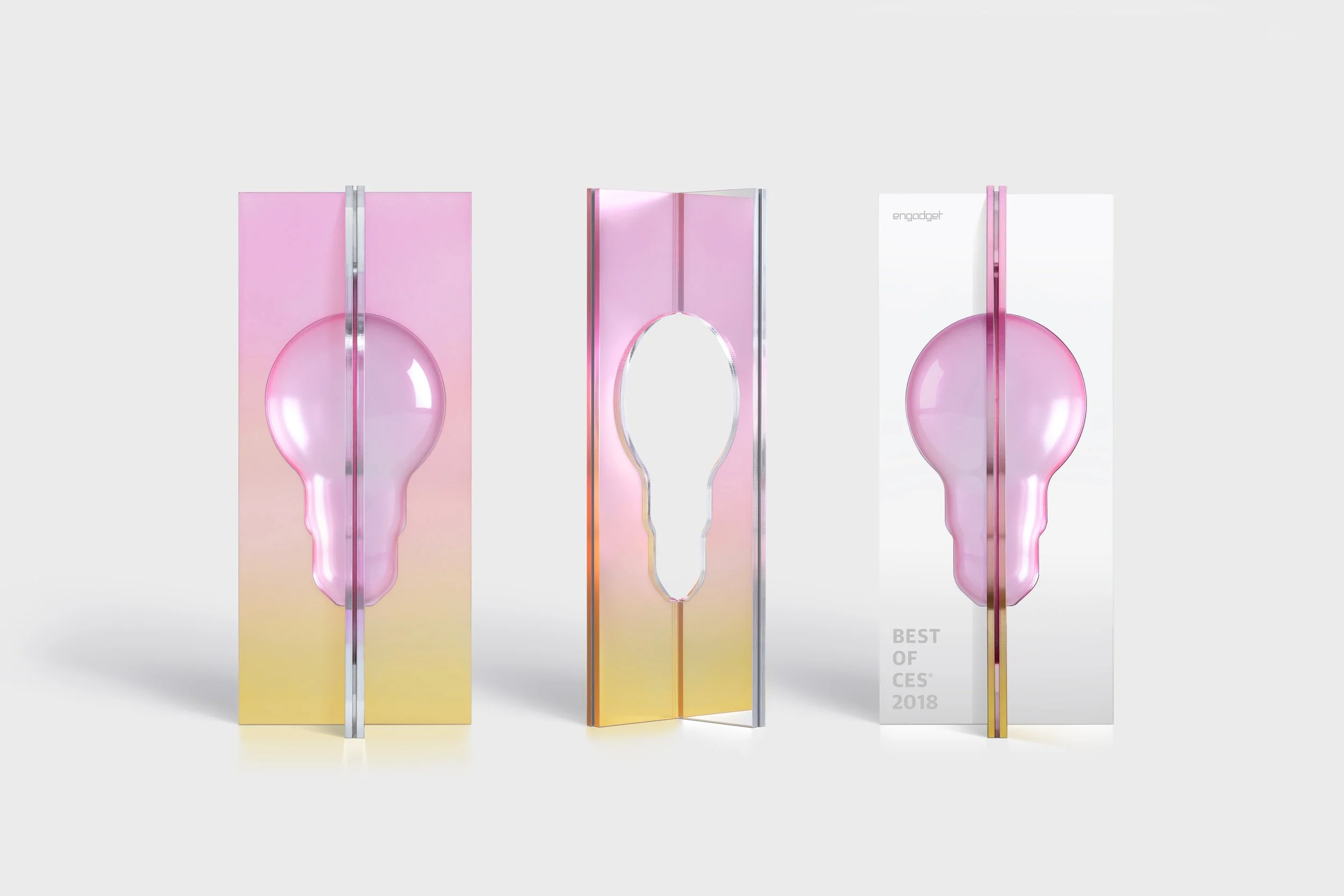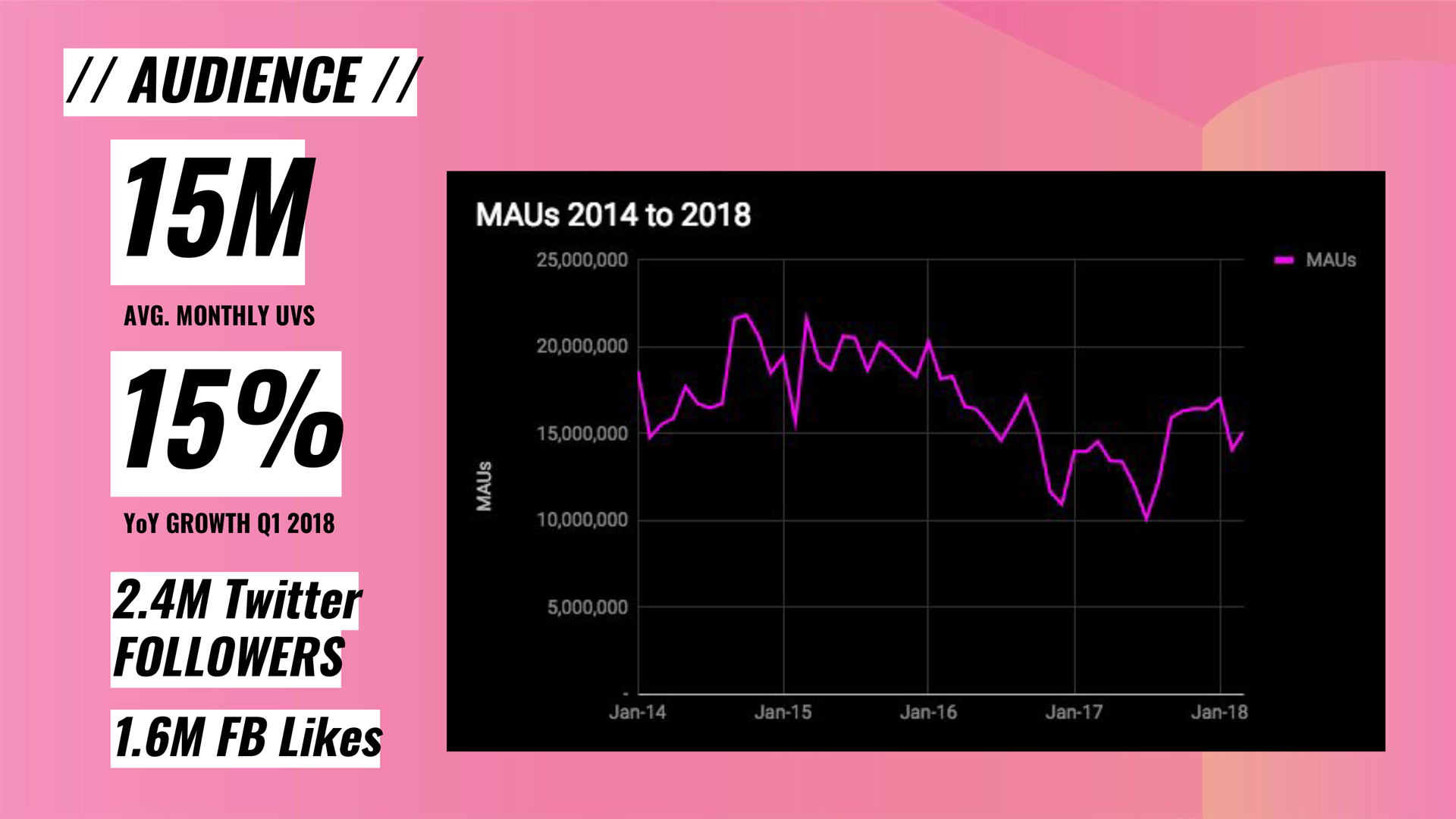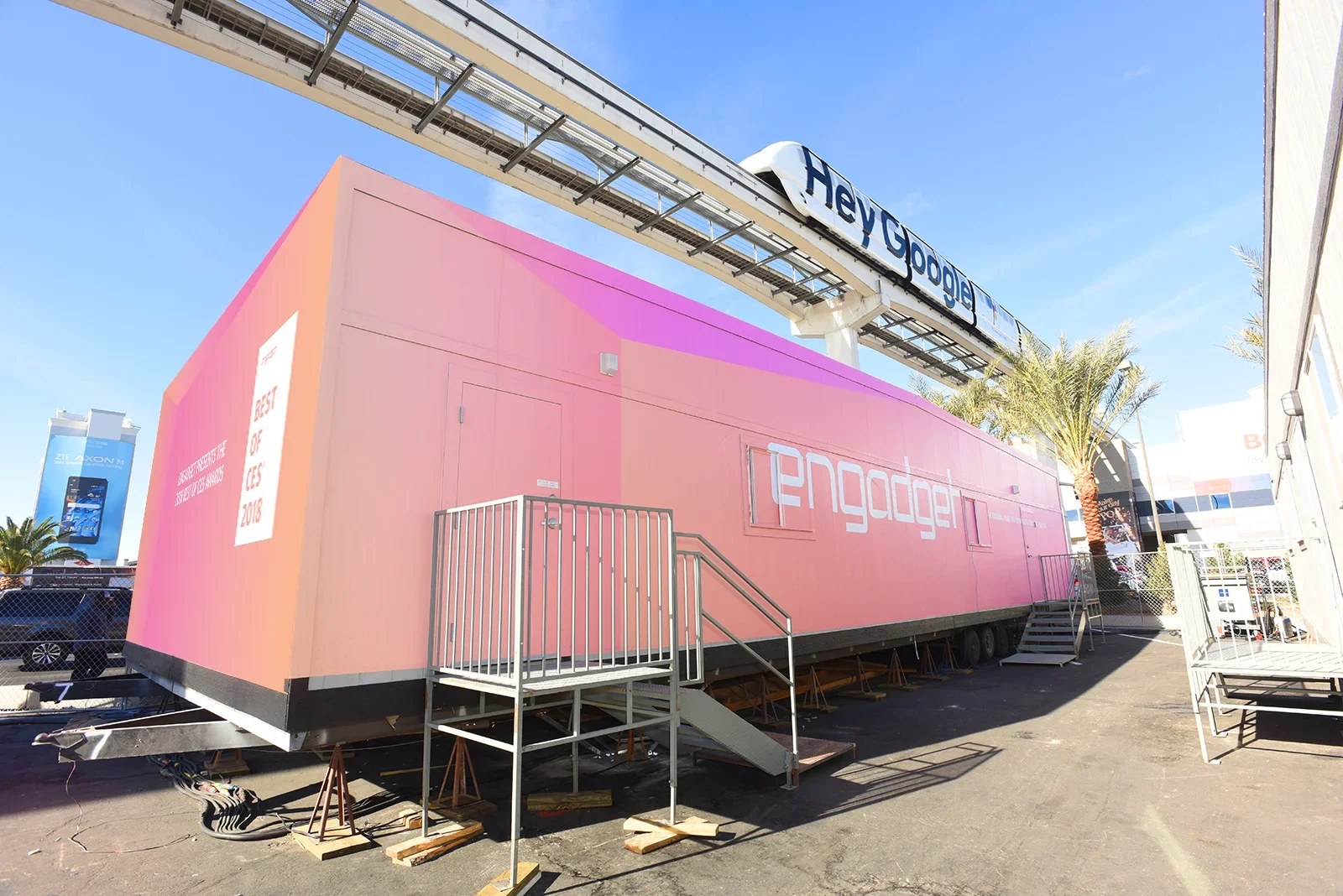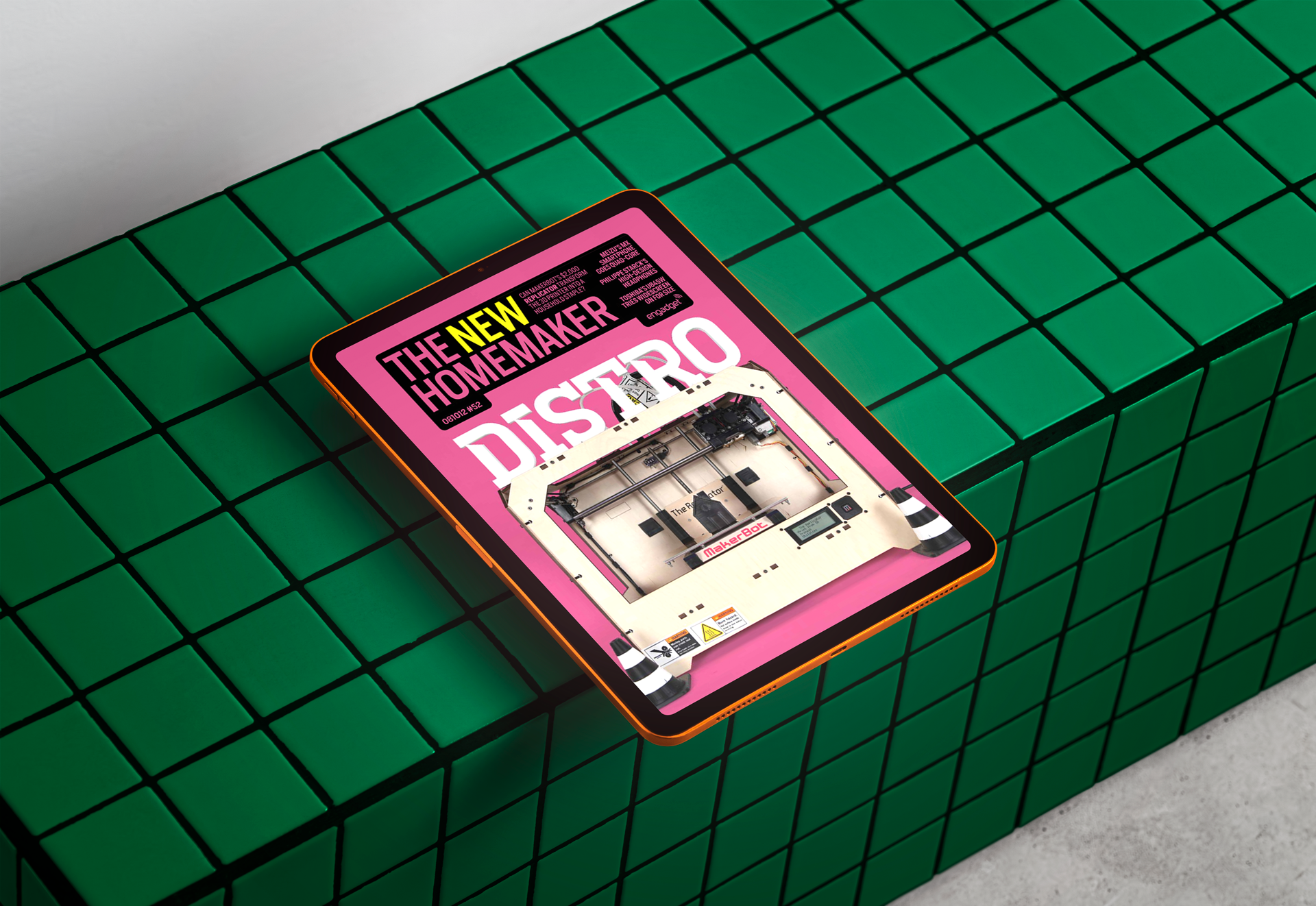ENGADGET
From Aging Tech Blog to Multimedia Powerhouse
THE FUTURE NOW
•
THE FUTURE NOW •
-
Engadget’s parent companies included AOL and Verizon Media
-
20 Million-plus global technology enthusiasts. Millennial / Gen X and primarily male.
-
When I joined Engadget as a freelancer in 2010, the aging tech publication was in a rut. Competition was at an all time high and the specs-driven reblog formula of the early dot-com era was no longer enough to keep up. Consumer technology penetrated every aspect of human existence and our readers were hungry for real reporting that shed light, not just on the latest gadgets, but on how they might shape human existence.
-
Over eight years and six roles, I transformed the waning gadget blog into a multi-media powerhouse, leaning on our audience’s hunger for unique reporting, striking visuals, and future-focused innovation. As Executive Editor and, later, Editor-in-Chief, I led a full-scale redesign and editorial restructuring, expanding the site’s reach with video, audio, social media, and live event programming.
The Rebrand \ Engineering a Comeback
After two years leading the site’s weekly magazine, I took over as Managing Editor of Engadget proper. In my new role, I oversaw day-to-day editorial operations, managing a team of 40-plus writers, editors, producers, and social media marketers spread across four continents. In lieu of a dedicated marketing team, I also took on the role of de facto creative director and brand strategist. When I exited Engadget as Editor-in-Chief five years later I’d not only reshaped the voice and editorial strategy, but also the site’s branding and visual language.
In 2015, I initiated a multi-million dollar rebrand, enlisting Area 17’s New York team to redesign Engadget’s website and identity. This was the era of iPhone ubiquity and the birth of “smart” everything. The average early adopter wasn’t necessarily deeply steeped in the language of gadget geekery. Engadget would have to embrace a new, more casual tech user in order to reach its full potential.
The new site was a sleek, multimedia tech news destination that referenced the growing sophistication of consumer technology and Engadget’s maturity as a publication. To address a shift in consumption, the new site favored video, social sharing, affiliate marketing, and recirculation.
We coupled the redesign with a new editorial mission and a shift in coverage. In-depth reporting replaced short-form reblogging as the site’s standard fare. We challenged writers and editors to take a step back from their laser focus on the latest gadgets and consider a far-off future. “Tomorrow,” a new vertical that spoke to our audience’s interest in game-changing technologies like quantum computing and artificial intelligence, further solidified this new perspective.
The gadget blog was dead. The new Engadget was a global, multimedia powerhouse with an eye on the far future. The redesign delivered millions of new uniques and increased visibility across multiple channels.
15 PERCENT
YoY AUDIENCE GROWTH
3 MILLION
NEW MONTHLY ACTIVE USERS

STRATEGY AT A GLANCE 2018
We introduced the Engadget rebrand in December 2015, after a year of design and development. Within months traffic was way up, reaching up to 3 million new readers monthly. The future was bright, at least for a time. That summer, a distributed bot attack tanked the site’s search ranking. I was appointed Editor-in-Chief soon after, and it became my mission to reverse the millions in traffic lost.
Over the course of the next year, I worked cross-functionally with Verizon Media’s dev and analytics teams to deliver a content strategy focused on SEO, evergreen original reporting, and automated content distribution. With our writers, editors, content creators, and video producers united under one goal, we regained nearly 8 million in lost uniques by January 2018.
SEO Triage \ Battling the Bots
IRL Activation \ Making the Stage at CES
5.2 MILLION
UNIQUE VISITORS
$1.5 MILLION
SPONSORSHIP REVENUE
ONE WEEK
38 WRITERS, EDITORS & PRODUCERS
Every January, hundreds of thousands of tech insiders descend on Sin City for one week of innovative excess. The annual Consumer Electronics Show served as Engadget’s bread and butter, delivering more than 5.2 million uniques and $1.5 million* in sponsorship revenue from brands like Toyota and Verizon. Over the course of seven days, our team of 30+ writers, editors, designers, and developers would produce hundreds of posts, frequent liveblogs, and 20-plus hours of live video from the Engadget stage.
From 2015 to 2018, it was my job to ensure a seamless editorial and visual experience for an audience of voracious tech consumers online and IRL. In addition to directing show coverage, I oversaw creative direction for the stage, trailer, and Best of CES awards, working cross-functionally with marketing, advertising, social, events, and design departments both internally and externally. As Executive Editor and later Editor-in-Chief, I also hosted tours for advertisers, interviewed tech luminaries on the CES stage, and MC’d the annual Best of CES awards show.
Each year I led the team in devising a fresh brand activation that leveraged audience analytics and industry trends. We continually returned to the motif of technology’s disruptive radiance, whether that be the shine of a simple light bulb or the gentle glow of a smartphone screen. This theme served as a guiding light, appearing in key visual cues from year to year. We captured the power of light and color (or a lack thereof) in prismatic crystal trophies (2015), walls of gradients (2018), and black and white geometric patterns that mirrored the zebra-like camouflage of prototype packaging (2017).
For trophies and show graphics, we drew inspiration from the “light bulb moments” that shape our collective future. In 2017, I commissioned Box Clever, a San Francisco-based industrial design studio, to stream-line trophy design and production. A double wide trailer, which served as Engadget command central, carried the graphic language from our show floor stage to the parking lot, offering a striking brand touchpoint outside the Convention Center.
*Stats based on CES 2018 performance
Creative Direction & Programming: Christopher Trout | Graphic Design: Reena Karia | Trophy Design: Box Clever | Video & Motion Graphics: Engadget Video Team
2017 REBOUND STRATEGY AT A GLANCE
Legacy Building \ The Engadget Experience
YOUR HANDS ARE FEET
AMELIA WINGER-BEARSKIN & SARAH ROTHBERG
DINNER PARTY: LAURA WEXLER & TEAM
DANCE WITH FLARMINGOS: KRISTIN LUCAS
UNTRAINED EYES: GLENN KAINO & JESSE WILLIAMS
MAPPER’S DELIGHT: TAHIR HEMPHILL
5 ARTISTS
$500,000 IN GRANTS
1 DAY ONLY
800+ ATTENDEES
In the Spring of 2017, I leveraged Engadget‘s sway in the tech space to facilitate the marriage of two often disparate fields: art and technology. With $500,000 funding from Verizon Media’s marketing department, The Alternate Realities Grant became the world’s largest award for immersive art. Five grantees each received $100,000 to develop mind-bending experiences that enlisted AI, AR, or VR, and addressed the theme of alternate realities. The diverse collection of visual artists, educators and filmmakers, debuted their works at The Engadget Experience, a one-day symposium at the historic United Artists theater in downtown Los Angeles.
A series of talks, panels and screenings, offered our tightly curated audience of 800-plus attendees a glimpse at the future, where technology and the arts come together in unexpected ways. The guest list included executives and creatives from technological juggernauts to esteemed cultural institutions like Google, Facebook, YouTube, Oculus, RSA, Technicolor, Tribeca Film Festival, Sundance Film Festival, and the Academy of Motion Picture Arts and Sciences.
We followed the creation of each project in a short-form documentary that premiered at the event. The program garnered media attention from The Verge, Variety, Slate, and more. Grantee projects have gone on to be shown at galleries, festivals, and cultural institutions across the globe, further solidifying Engadget’s reputation as a technological tastemaker.
Creative Direction & Programming: Christopher Trout | Logo Design & Concept: Reena Karia | Environmental Graphic Design: Marina Murad
Distro \ Rethinking the Digital Weekly
500K+
APP DOWNLOADS
One year after the launch of the first iPad, Apple introduced NewsStand, a sort of app store within an app store for digital publishers. That same day we launched Distro. It was the first tablet magazine from a digital-first property, and served as a highly designed weekly alternative to the onslaught of headlines in a 24-hour news cycle. Each issue included exclusive content, regular columns, and features, a curated selection of news from Engadget and long-form original reporting.
As the magazine’s founding editor, I managed two associate editors and collaborated with AOL’s mobile dev and design teams to create a one-of-a-kind, award-winning publication. I also hired the site’s first social media manager and created standards for long-form features and interviews across Engadget proper.
We published 109 issues of Distro in a two-year period receiving awards and recognition from the Webbys, Appys, and the Society of Publication Designers. With more than half a million downloads of its Android and Apple apps, Distro proved strong competition for print-first publications like Wired. It served as the template for the Huffington Post’s award-winning digital magazine, and marked a shift toward original reporting and long-form storytelling at Engadget.
Awards
2013 Society of Publication Designers: Award of Excellence
2013 Appy Awards: Best Consumer Magazine/Newspaper
2013 Webby Honoree: Best Mobile Sites and Apps, News
Computer Love \ The Evergreen Viral Sensation
25 MILLION+
VIDEO VIEWS AND COUNTING
What started as a personal exploration of online dating ballooned into a popular column and viral video series exposing the often awkward relationship between sex and technology. In November 2015, just months after a breakup, I launched Computer Love, promising to “dive deep into the sweet, sticky stew of sex in the 21st century.”
Over the course of the next three years, I centered stories of our most intimate human-machine interactions, pulling in more than 25 million video views globally. My unapologetic, often graphic, and honest exploration of human sexuality landed me on Dr. Oz, New York Magazine’s Sex Lives podcast, and the BBC World Service. The series has also been referenced by Fox News, Vox, Maxim, The International Business Times, Business Insider, This American Life and more.



























